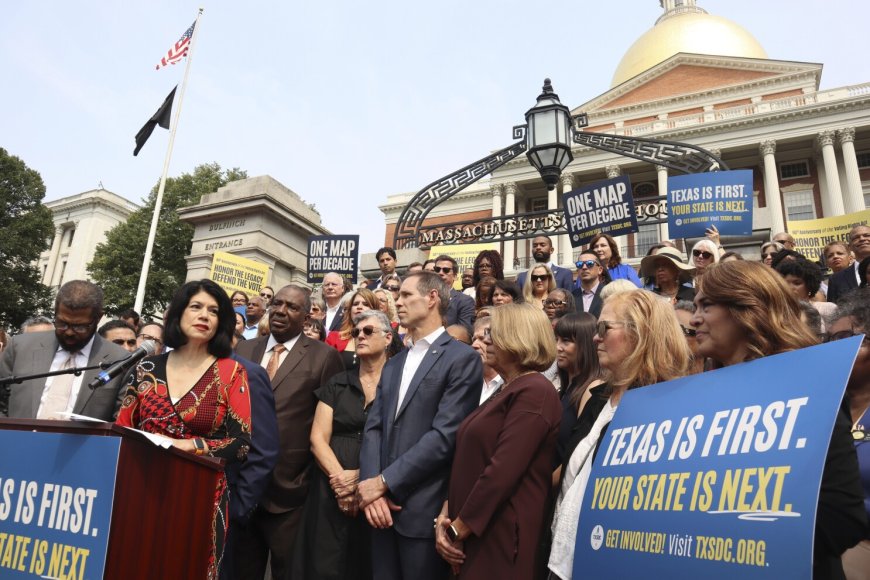Texas Redistricting Showdown Escalates: GOP Seeks +5 Seats as Democrats Flee Capitol
Texas Republicans have unveiled a mid-cycle redistricting plan to gain five U.S. House seats. More than 50 Democratic legislators fled the state, triggering threats from Gov. Greg Abbott and AG Ken Paxton.

AUSTIN, Texas — The political storm over redistricting in Texas reached new heights this week as Republican lawmakers pushed a controversial mid-decade congressional map engineered to add up to five additional U.S. House seats, triggering a dramatic exodus of more than 50 Democratic state legislators. Their strategic departure effectively denied the House a quorum—stalling the vote—and prompted legal threats from the state’s Republican leadership.
Quorum Bust: Democrats Flee Austin
On August 3, more than 50 Democratic House members left Texas—heading to Illinois, New York, and Massachusetts—to prevent a quorum needed to approve the GOP-sponsored map. The next day, Governor Greg Abbott warned that lawmakers who did not return by Friday, August 8 would face removal from office. Attorney General Ken Paxton went further, threatening potential quo warranto petitions to vacate their seats and even suggested criminal charges against those soliciting funds to pay their $500-per-day fines.The Texas Tribune+15Wikipedia+15Reuters+15
GOP’s Ambitious Redistricting Agenda
Republican leaders unveiled the proposed map on July 30, driven by a request from President Donald Trump to boost GOP representation in Congress ahead of the 2026 midterms. The new lines would reshape Texas’s 38 congressional districts, targeting increased representation in traditionally competitive seats.New Haven Register+2The Times+2 The Texas House then swiftly created a special redistricting committee led by Representative Cody Vasut, including 12 Republicans and nine Democrats.Wikipedia
Legal Fallout and Enforcement Threats
Following the Democrats’ departure, the Texas House voted 85–6 to issue civil arrest warrants for the absent members—though enforcement remains limited to state borders. Governor Abbott directed the Texas Department of Public Safety to locate and return them. Yet legal experts assert that extradition from other states is unlikely.Reuters+3Wikipedia+3Reuters+3 Paxton also filed for expedited Supreme Court review, hoping to declare individual seats vacant under “dereliction of duty.”The Guardian+2democracydocket.com+2
National Repercussions
As the fight intensified, Democratic governors in blue states—including California’s Gavin Newsom and New York’s Kathy Hochul—voiced support, promising counter-redistricting efforts of their own. This response marks a turning point, with Democrats now considering aggressive tactics they previously denounced.The Washington Post+1
The confrontation in Austin has rippled across other states, with GOP-led legislatures in Ohio, Florida, and Indiana weighing similar map changes. Some pundits have dubbed the movement “Trump‑mandering.”The Guardian
Stakes: Control of Congress at Risk
With the Republican House majority in Washington hanging by a few seats, Texas’s map could tip the balance. If successful, congressional analysts believe the GOP could retain or expand its majority in 2026. Conversely, failure to pass the map might energize national pushback and boost Democratic turnout.TIME
Key Timeline
| Date | Event |
|---|---|
| July 30 | GOP unveils new congressional map |
| Aug 1–3 | Democrats begin leaving Austin to break quorum |
| Aug 4 | Civil arrest warrants issued; legal threats announced by Abbott/Paxton |
| Aug 5–6 | GOP escalates legal pressure; Democratic states signal countermeasures |
| Aug 8 (Friday) | Deadline for lawmakers to return to avoid removal from office |
Why This Matters
-
Quorum-breaking has become a repeat strategy: Democrats previously deployed it in 2003 and 2021 during fight-space votes.Yahoo+12New Haven Register+12The Guardian+12democracydocket.com+2ABC News+2democracydocket.com+6PBS+6Wikipedia+6
-
Legal action remains untested: Court processes for vacancy removal are lengthy and unlikely to be resolved before early 2026 elections.
-
National polarization over redistricting: The escalating conflict demonstrates the rising willingness of partisan actors to disregard traditional map-drawing norms for electoral gain.











